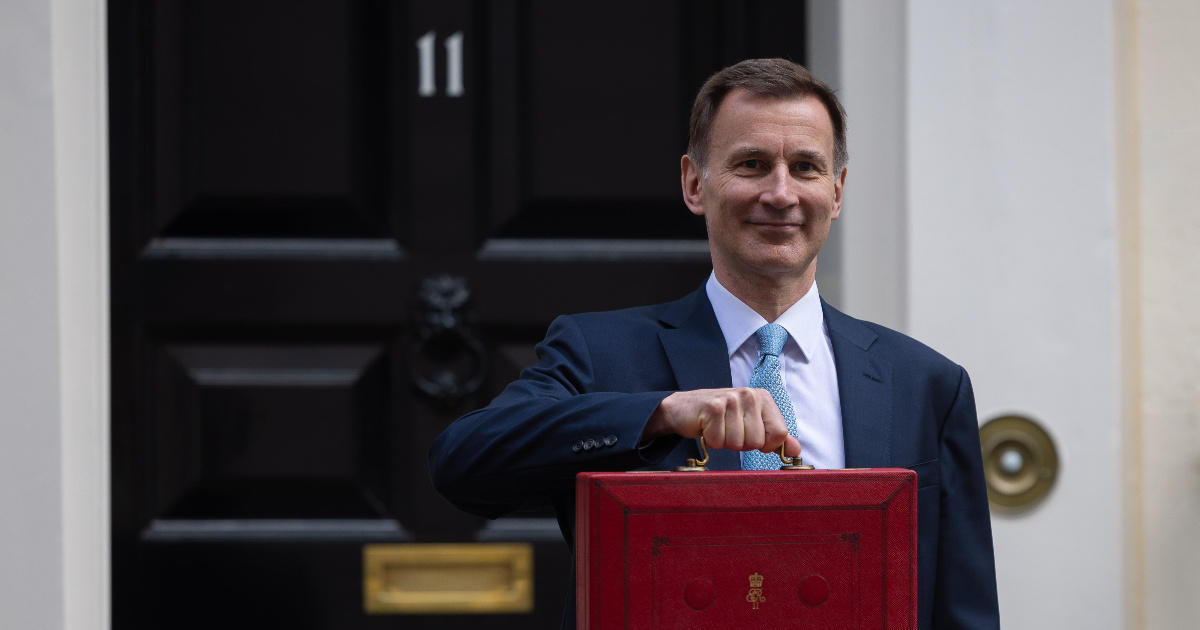Spring Budget 2024: fact checked

In Parliament today, the Chancellor of the Exchequer Jeremy Hunt delivered the government’s Budget—widely expected to be the last before the next general election. We’ve taken a look at some of the claims Mr Hunt made during his speech, covering the impact of changes to National Insurance contributions, whether debt is falling and the government’s record on crime and policing.
“When combined with the autumn reductions, [the National Insurance cut] means 27 million employees will get an average tax cut of £900 a year.”
As had been heavily trailed in the media, Mr Hunt announced a further 2p cut in National Insurance contributions (NICs). He claimed this, combined with a similar cut announced in last November’s Autumn Statement, will mean an average tax cut of £900 a year for employees.
We’ve previously looked at a similar claim about the previous cut to NICs meaning a £450 tax cut for the average worker, and found it was true but missing important context.
Although it is correct that a 2p reduction in NICs means someone on £35,000 a year—roughly the average full-time wage—pays £450 less in National Insurance than if the rate had remained the same, this figure doesn’t account for the impact of ongoing freezes to personal tax thresholds.
The personal allowance above which you start paying income tax has been frozen at £12,570 until 2028. The threshold at which the higher rate tax kicks in is currently frozen at £50,271.
This means that, as salaries rise, the number of people that earn enough to begin paying tax and National Insurance increases, as do the number of people moving into the higher tax bracket.
According to the Institute for Fiscal Studies (IFS), while the latest 2p cut announced at today’s Budget combined with the 2p cut from the Autumn Statement will more than offset threshold freezes for 2024/25 for the roughly half of employees who earn between £26,000 and £60,000, only those earning more than around £50,000 will see overall savings of £900.
The IFS calculates that an employee on the average wage of £35,000 will gain almost £900 from the reduction in NICs cuts, but lose more than £500 as a result of the threshold freezes since 2021.
And for someone working full-time and earning the minimum wage, the combined impact of the NICs cuts and threshold freezes would be even worse—the IFS estimates they would see a net tax increase of more than £200.
In the longer term, threshold freezes will mean people end up paying more tax, and the IFS estimates that by 2027/28, an employee on average earnings of £35,000 will see a net tax cut of just £140.
According to the Office for Budget Responsibility (OBR), by 2028 there are expected to be an additional 3.7 million taxpayers as a result of threshold freezes, and an additional 2.7 million will move into the higher tax bracket.
“Debt is falling in line with our fiscal rules.”
Mr Hunt also said “debt is falling in line with our fiscal rules”. However, as we’ve written before about similar claims, and as others have pointed out today, debt is not currently falling—it is forecast to fall.
The government’s fiscal rules state that underlying debt must be falling as a percentage of GDP between the fourth and fifth year of the forecast period.
Underlying public sector net debt, which excludes the Bank of England’s debt and is the measure the government uses in its targets, is currently forecast to peak in 2026-27 and 2027-28 before falling, according to the OBR.
The OBR’s most recent forecast, published today following the Budget, says: “Public sector net debt (excluding the Bank of England) in the central forecast rises from 88.8 per cent of GDP this year to a peak of 93.2 per cent of GDP in 2027-28, before falling slightly to 92.9 per cent of GDP in 2028-29.” (The OBR forecasts that debt will first hit the peak of 93.2% of GDP in 2026-27.)
After the Prime Minister Rishi Sunak wrongly claimed “debt is falling” last November, the UK Statistics Authority warned this claim “may have undermined trust in the Government’s use of statistics and quantitative analysis in this area”.
“Burglaries and violent crime have halved in the last 14 years, after we invested in 20,000 new police officers.”
On the government’s record on public services, Mr Hunt claimed that burglaries and violent crime have halved since 2010, and said this was “after we invested in 20,000 new police officers”.
He’s correct on crime levels. According to Crime Survey for England and Wales data, between the year ending September 2023 (the latest period for which data is available) and the year ending March 2010 (the last period before the Conservative-led coalition entered government), the number of violent crime incidents decreased by 51%, while domestic burglary incidents decreased by 56%.
But it’s not clear why Mr Hunt appeared to attribute this decrease to the recruitment of 20,000 new police officers, given that this figure refers to the number of additional police officers recruited between March 2019 and March 2023.
Since the year ending March 2019 domestic burglary incidents have decreased by 43%, while violent crime incidents have decreased by 33%.
Since 2010 the net increase in the number of police officers is far less than 20,000.
Between March 2010 and March 2018, the headcount number of police officers fell from 146,030 to a low of 125,094—a decrease of almost 21,000—before beginning to increase in 2019.
As of September 2023, there were a total of 149,164 police officers in England and Wales—3,134 more than in March 2010.
We’ve written more about the government’s claim to have recruited 20,000 additional police officers here.
Image courtesy of HM Treasury